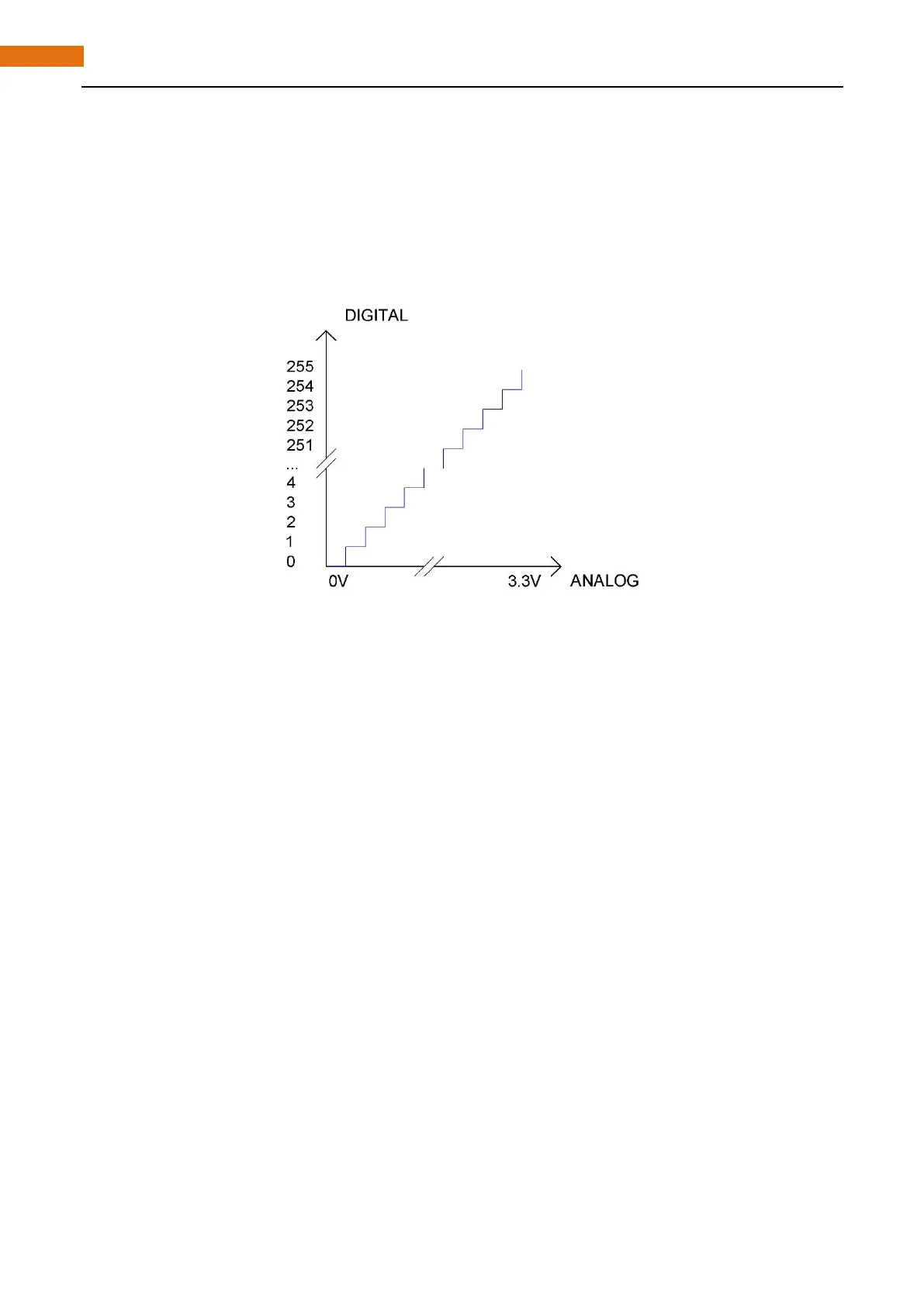Circuit knowledge
ADC
ADC, Analog-to-Digital Converter, is a device used to convert analog to digital. The range of the ADC on
PCF8591 is 8 bits, that means the resolution is 2^8=256, and it represents the range (here is 3.3V) will be
divided equally to 256 parts. The analog of each range corresponds to one ADC values. So the more bits ADC
has, the denser the partition of analog will be, also the higher precision of the conversion will be.
Subsection 1: the analog in rang of 0V-3.3/256 V corresponds to digital 0;
Subsection 2: the analog in rang of 3.3 /256 V-2*3.3 /256V corresponds to digital 1;
…
The following analog will be divided accordingly.
DAC
DAC, that is, Digital-to-Analog Converter, is the reverse process of ADC. The digital I/O port can output high
level and low level, but cannot output an intermediate voltage value, which can be solved by DAC. PCF8591
has a DAC output pin with 8-bit accuracy, which can divide VDD (here is 3.3V) into 2
8
=256 parts. For example,
when the digital quantity is 1, the output voltage value is 3.3/256 *1 V, and when the digital quantity is 128,
the output voltage value is 3.3/256 *128=1.65V, the higher accuracy of DAC is, the higher the accuracy of
output voltage value is.
